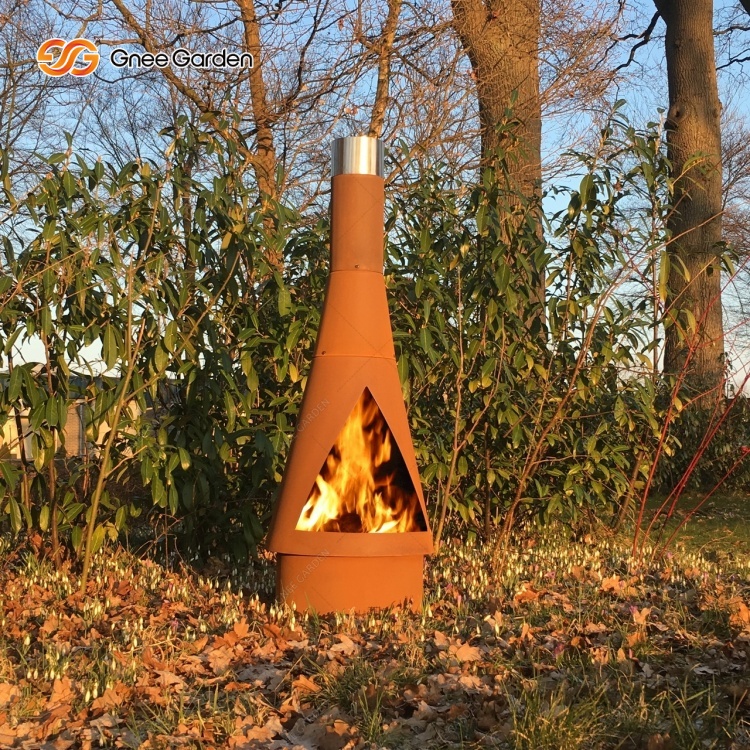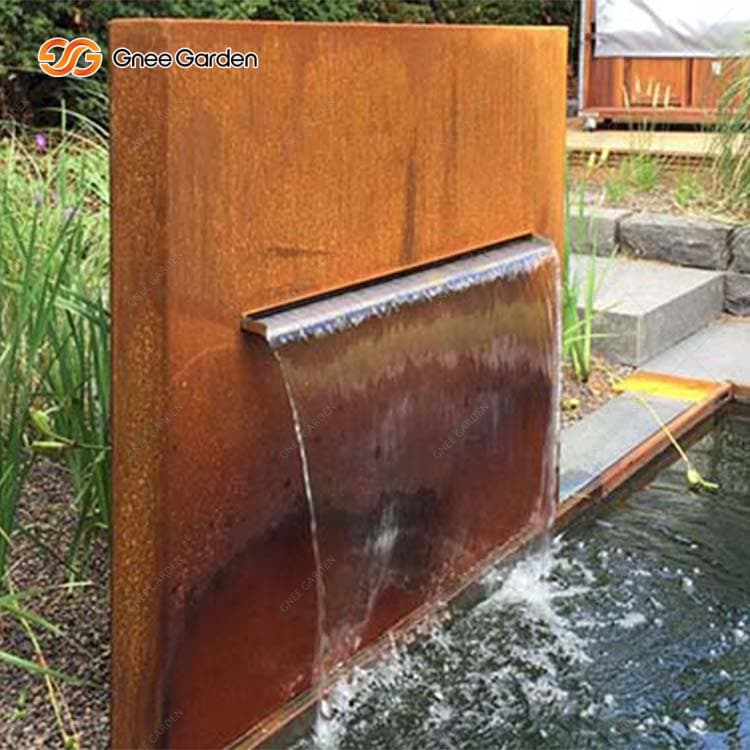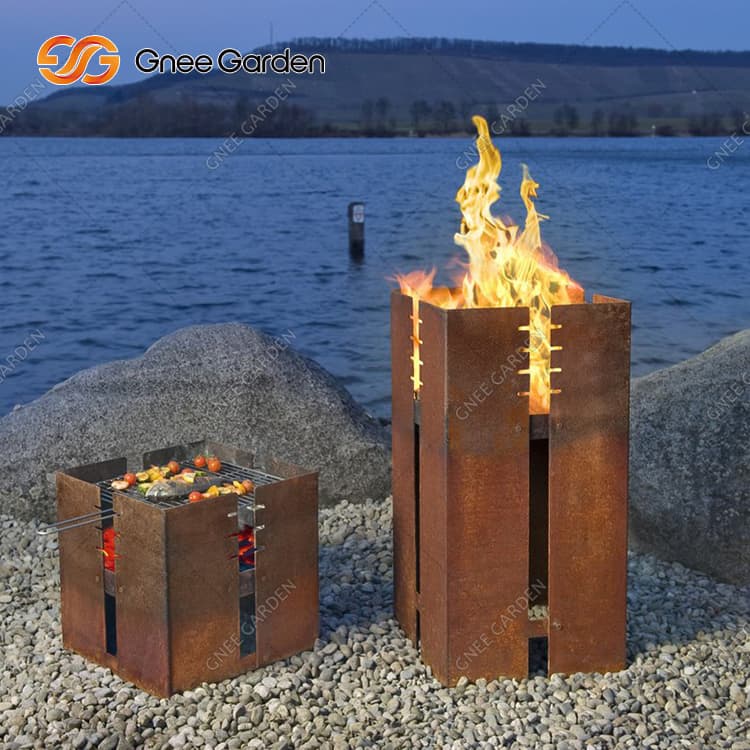Spring has quietly arrived! The warm breath blows across the earth again, inviting us to step out of the room, feel the fresh air, and share good times with family and friends. To welcome this season of life and possibility, we offer some practical design considerations for introducing fire pits and freestanding fireplaces to your outdoor space. Whether it’s the seafront, country garden or rooftop terrace, there’s no better way to add warmth, comfort and a natural ambiance than a fire pit or fireplace.
Integrating a fire pit or fireplace into an outdoor space is relatively simple, but planning early in the process is crucial to ensure that the end result meets user needs and that the installation process goes as smoothly as possible.
Fire pit vs fireplace:
The design of the outdoor gas fire pit is inspired by the traditional campfire. Fire pits offer people a safer, less messy heating option than burning wood, which is often too hot, messy and difficult to control, and in many places there are legal restrictions on its use.
The fire pit plays a central role in the space, with furniture arranged radially around it. Like a campfire, a fire pit draws people together and creates a welcoming atmosphere in the center of the space. The presence of a fire pit invites conversation around the flames and allows people to be completely immersed in the mesmerizing glow of the fire.
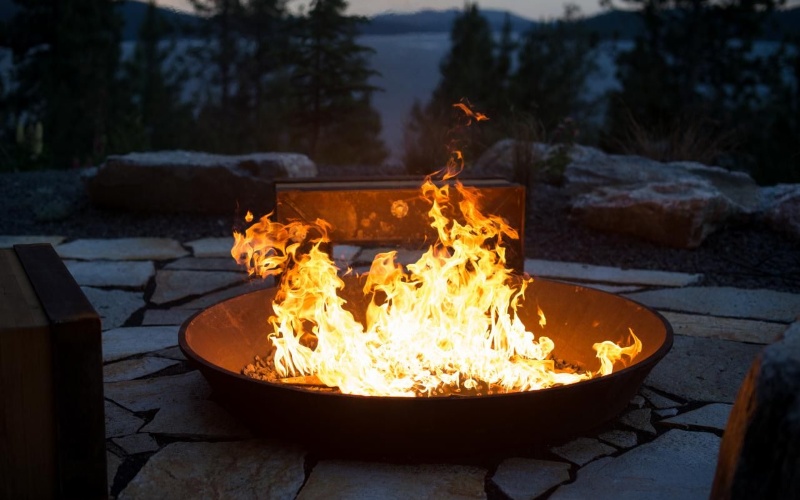
Conceptually, a fire pit is very simple: a container and a burner. This vessel is typically made of metal or concrete and houses a stainless steel burner designed to safely control the flame within a weather-resistant enclosure. The burners for outdoor fire pits are designed to create a beautiful flame, provide the required heat output (BTU or kilowatts/hour), and not be easily extinguished by wind.
Technical requirements for a fire pit include:
– A firm, level position so that air can flow in through the bottom and water can flow out.
– Fuel source: natural gas, liquid propane or ethanol. It is necessary to consider the direction of the gas pipeline, whether to use gas bottles and where to store the gas bottles.
– Ignition method: can be manual ignition without electrical connection, or electronic ignition requiring electrical connection to the burner and equipped with control facilities (such as wall switch, timer, remote socket or smart home system).
– Keep an appropriate distance from combustible materials.
When choosing a fire pit, be sure to look for products certified to meet local safety standards and make sure the product has the following features:
-Measurable and consistent heat output.
– Stable container, not easy to tip over.
– Equipped with a flame sensor gas shut-off function to prevent unburned gas from being released into the air to ensure safety.
– Glass shields or metal screens are available to accommodate conditions such as high winds or specific safety needs.
Freestanding outdoor fireplaces use the design concept of an indoor fireplace but are made from materials and components suitable for exposure to the elements. They can be purchased as a complete product, including housing and burner, or they can be custom designed on site. From a functional perspective, a freestanding fireplace operates similarly to a fire pit and has the same safety features.
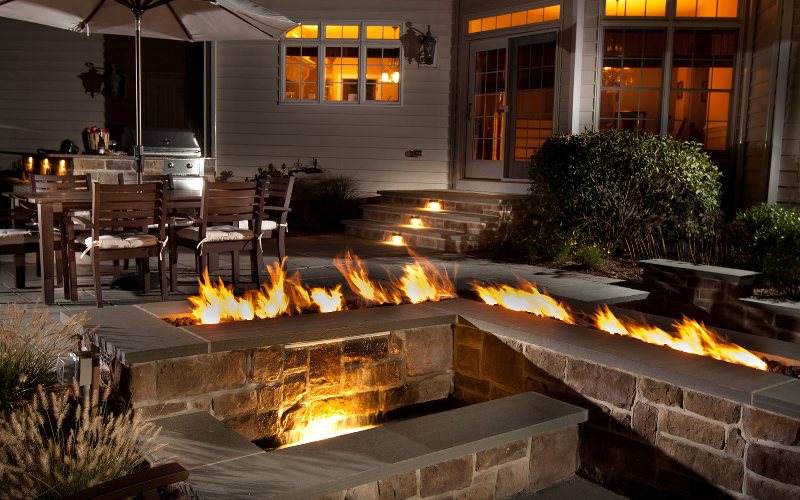
Unlike a fire pit, an outdoor fireplace is designed more as a wall to define a space, either along the edge of the space or as a divider. Their warmth and atmosphere radiate outward in a flat surface, creating a projection at a 180-degree angle to the face. Therefore, the furniture is arranged in a manner similar to that of an indoor living room, where the fireplace either defines the central axis of the space, or is arranged in a semicircular manner, with the fireplace in the center. Regardless of the layout, an outdoor fireplace provides vertical structure for an enclosed and cozy atmosphere.
When planning an outdoor fireplace, there may be more to consider than a fire pit: The verticality of the structure needs to be bolted to a concrete pad or foundation, or to an adjacent structure, for stability. The technical requirements for an outdoor fireplace are basically the same as for a fire pit, including a stable, level position, a fuel source, a method of lighting the fire, and maintaining an appropriate distance from combustibles.
As with fire pits, it’s critical to choose a certified freestanding fireplace or burner that meets local safety standards.
Whether you choose to introduce a fire pit or fireplace to your outdoor area, remember that fire is a design element in itself. Careful planning can not only improve the functionality of a space, but also add unique beauty and ambience. May you enjoy the endless fun of outdoor life this spring!



